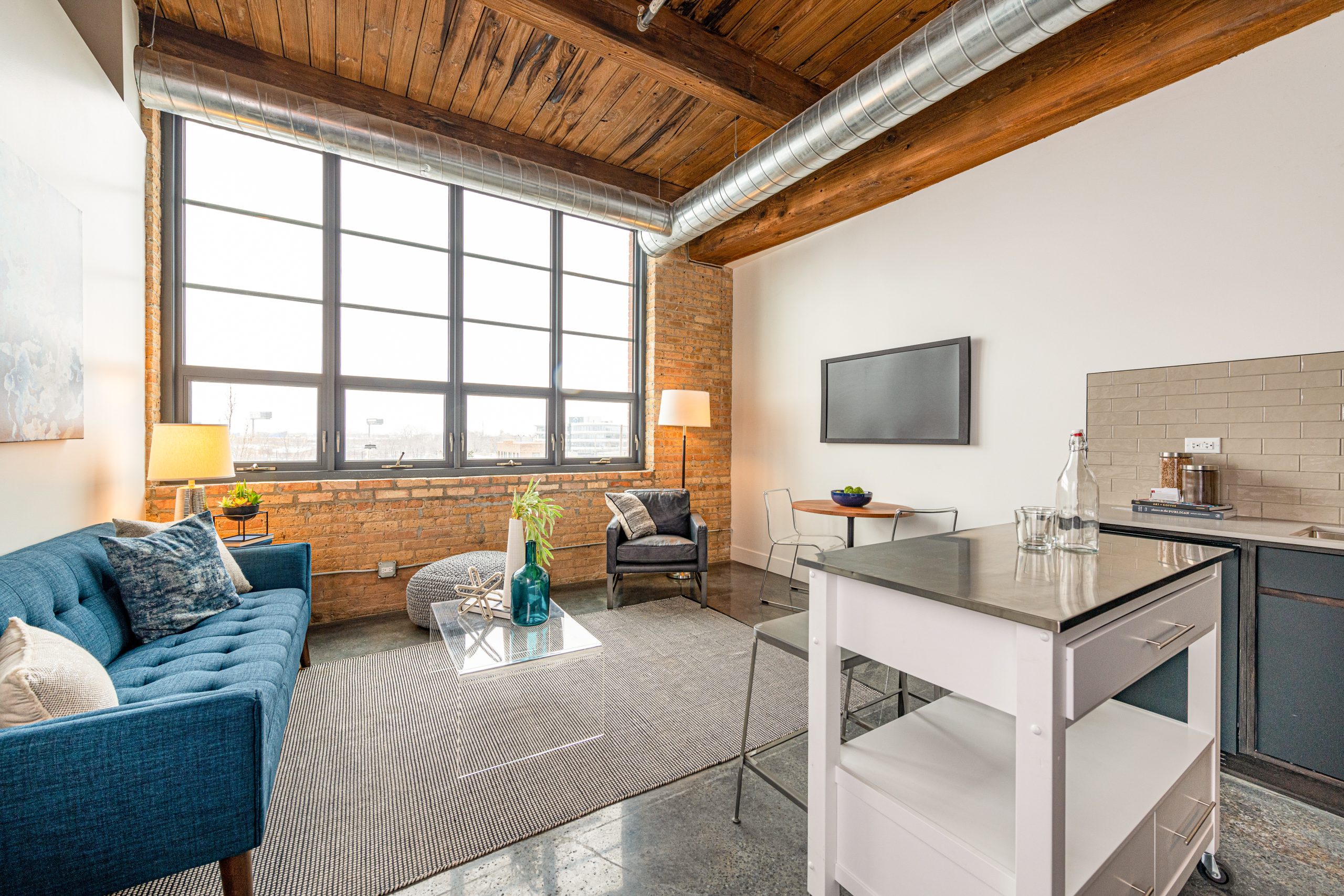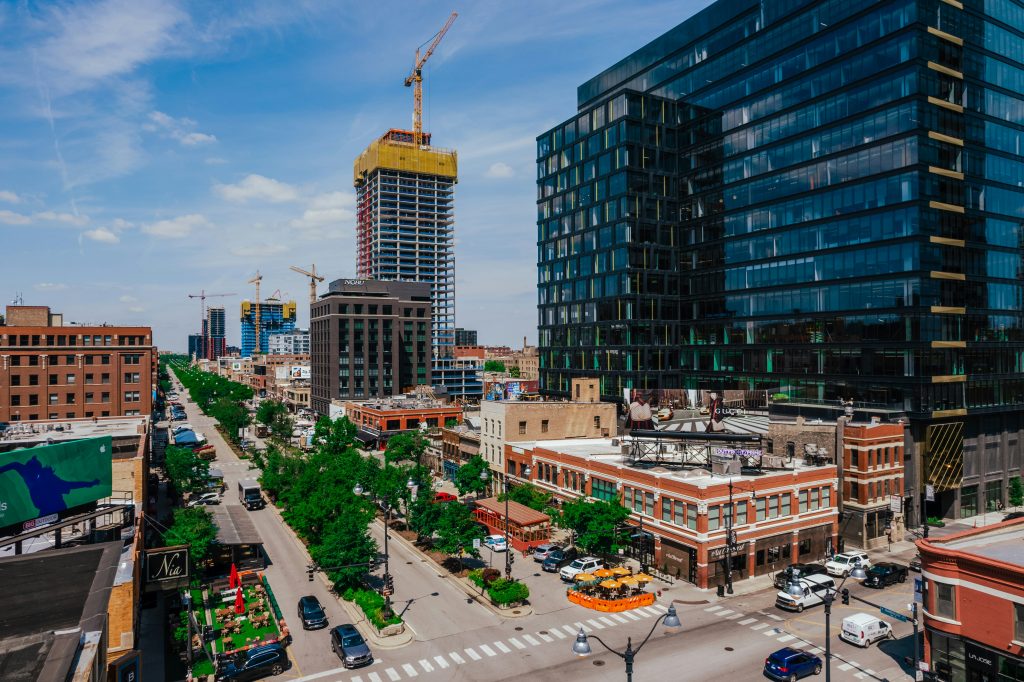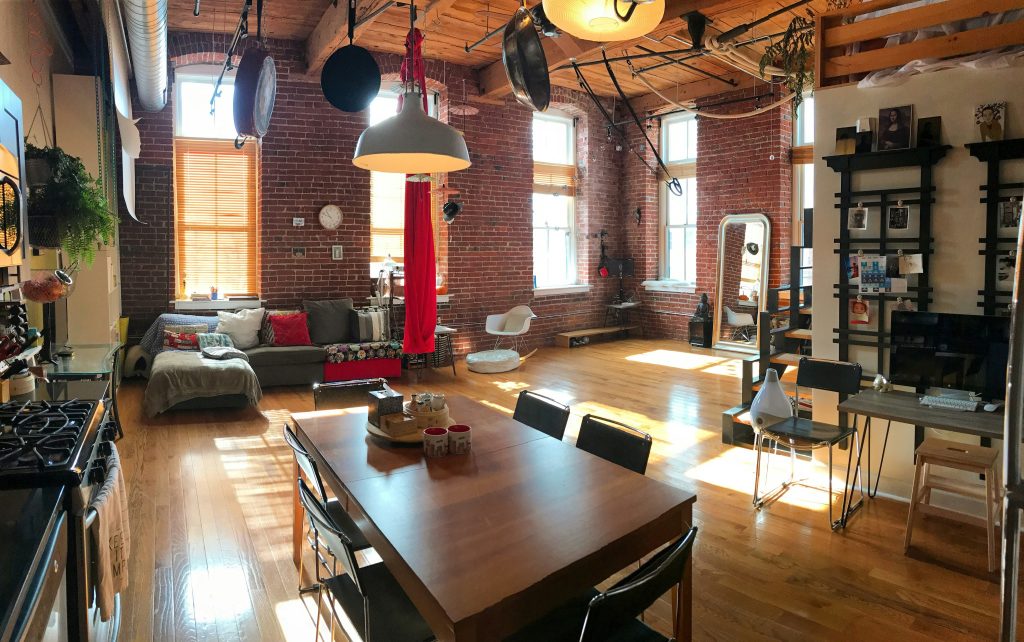|

When it comes to Chicago real estate, few styles are as instantly recognizable as the loft. Signature soaring ceilings, massive windows, and exposed brick are defining features of this effortlessly cool architecture style. With lofts available to both rent and buy throughout the city’s most sought-after neighborhoods,
Chicago’s loft scene was born from reinvention. As industry shifted in the late 20th century, old warehouses and factories found new life as residences. Developers embraced the city’s architectural heritage, preserving vintage details while adding modern comforts.
Because industry relied heavily on the Chicago River for transporting materials, many factories were built on, or near, the River. As a result, loft-style residences are often located in many of Chicago’s most sought-after neighborhoods with proximity to the River.
If you’re looking for a loft, start your search in neighborhoods that still wear their industrial roots proudly:

Fulton Market, a neighborhood known for its lofts and loft-style residences.
Chicago is known for its diverse loft styles, each offering a different living experience. While the term “loft” is often used broadly, most lofts in Chicago fall into three main categories: hard lofts, timber lofts, and soft lofts.
Hard lofts are spaces that have been converted from historic industrial or warehouse buildings. When you envision true industrial lofts with large windows and exposed brick, you are probably picturing a hard loft. Hard lofts can be found in older neighborhoods with a history in manufacturing, and give renters and home buyers access to authentic Chicago character and unique architecture.
Key features of Hard Lofts:
+ Exposed brick
+ High ceilings
+ Large factory-style windows
+ Open floor plans
+ Original concrete and steel structures
+ Raw finishes
Timber lofts are a type of hard loft that has exposed wooden beams and columns that were utilized before the use of steel became popularized. Like all hard lofts, timber lofts boast large open layouts and industrial charm, but have inherently more warmth than modern hard lofts from the prevalence of more natural textures.
Key features of Timber Lofts:
+ Exposed brick
+ Wood ceilings and beams
+ High ceilings
+ Open floor plans
+ Large factory-style windows
+ Historic craftsmanship
Soft lofts are modern developments built to mimic traditional loft aesthetics with the addition of modern conveniences. Residents can take advantage of core “loft style” layouts while taking advantage of developments made with residential purposes in mind, such as elevators, roof decks and outdoor living spaces, and living amenities like gyms.
Key features of Soft Lofts:
+ Open layout
+ Mid-height ceilings
+ Large windows
+ Drywall and modern finishes
+ Amenities like gyms and in-unit laundry

An example of a timber loft. Note the wood ceilings and beams, tall ceilings, open floor plan, and large windows.
Chicago’s residential development has slowed significantly, with zoning restrictions, rising construction costs, and other hurdles making new builds increasingly difficult. This trend coincides with an increase in adaptive reuse, a development trend that takes older buildings and repurposes them for residential living. While loft living has been popular for years, more and more properties are being transformed into residences. The result is a growing number of loft-style homes hitting the market.
For more on Chicago’s development trends, and for our thoughts on adaptive reuse in the market, check out our 2025 Midyear Market Report.
Lofts at Avenir, originally a historic hat factory, offers a new style of loft living. Completed in summer of 2025, the Lofts at Avenir are brand new apartment homes in Chicago’s bustling River West neighborhood.
Each of the one- and two-bedroom floor plans features soaring ceilings, exposed wood and brick, and brand new appliances and amenities. Drawing from the rich textures of the 1920s, including tweed, felt, and wool, the interior design marries vintage charm with floor plans made for modern living. Lofts at Avenir are true hard lofts, featuring large factory-style windows, open floor plans, brick walls, and wood beams throughout.
With direct access to the Lofts’ adjacent sister property, Avenir, residents will enjoy full access to the high rise’s amenities. Sprawling outdoor space includes a large pool, grilling stations, and cabanas. Indoor amenities include a maker’s space, multiple community lounges and kitchens, pet-friendly accommodations including a dog run, and a coworking space with sweeping views of the Chicago skyline.
Lofts at Avenir offers authentic Chicago loft living paired with the perks of a full-amenity apartment community. It’s a combination you won’t find anywhere else.
Residences at Lofts at Avenir, River West’s latest loft conversion.
Situated in West Lincoln Park just steps from Armitage Avenue, The Ludlow has been a North Clybourn Avenue landmark for over a century. Originally home to the historic Ludlow Typograph Factory, the property now offers studio, one-, two-, and three-bedroom apartment homes.
Each residence carries its own unique character. This is shaped by the building’s evolution across five interconnected structures, the result of more than 100 years of thoughtful additions and transformations. It feels as though you can trace time as you walk through the property, with hard lofts in some sections and timber lofts in others. While exact finishes vary by unit, you’ll find exposed brick, authentic wooden beams, and sky-high ceilings throughout.
Life at The Ludlow is enhanced by a suite of luxe amenities. The fitness center goes far beyond the basics, with ample cardio equipment, free weights, and weight machines. Residents can enjoy on-site fitness classes led by trained professionals. For a well-rounded wellness experience, residents can also enjoy a private sauna and a dedicated yoga studio. The Ludlow also boasts a large coworking space, stunning outdoor courtyard, and resident lounge.
The Ludlow provides a picture-perfect backdrop for those seeking loft-living in Chicago’s Lincoln Park neighborhood.
A residence at The Ludlow (left) and the community courtyard at The Ludlow (right).
Loft rent in Chicago can vary depending on the neighborhood and building style. In general, hard lofts and timber lofts in trendy areas like the West Loop or River North may cost more than a standard apartment because of their unique architecture and limited availability. Soft lofts or newer builds may be closer in price to modern apartments, but they often include updated amenities that add to the value.
Pros:
+ Spacious, open floor plans
+ High ceilings and large windows
+ Unique architectural character (exposed brick, beams, ductwork)
+ Often located in historic or trendy neighborhoods
Cons:
+ Sometimes lack storage space
+ Less privacy in open layouts (fewer walls and doors)
+ Higher utility costs due to tall ceilings and large windows
+ Noise can travel more easily in older buildings
Many loft buildings in Chicago are pet-friendly, especially larger soft loft developments that cater to renters with pets. However, pet policies differ by building, so it’s important to check size or breed restrictions, additional deposits, and whether the unit’s open layout works for your (and your pet’s) lifestyle.
Hard lofts are converted industrial buildings with original details like brick walls, timber beams, and factory windows. Soft lofts are newer constructions designed to feel like lofts but with modern finishes and amenities.
Some of the best-known loft-heavy neighborhoods include:
West Loop – historic warehouses turned into luxury lofts
River North – industrial timber lofts with character
South Loop – mix of hard loft conversions and new soft lofts
Wicker Park and Bucktown – artistic, vintage lofts in smaller buildings
Many lofts are open-concept but often feature partial walls, borrowed light, sliding doors, or enclosed bedrooms depending on the building. Hard lofts lean more toward open floor plans, while soft lofts may offer more traditional layouts.
Yes! Because lofts are unique and in limited supply, they tend to hold their value well. Hard and timber lofts, especially in sought-after neighborhoods, often appeal to buyers looking for something with more character than a typical condo.
Whether you’re renting for a year or buying for the long haul, the right loft is out there. Our team at Cross Street knows Chicago’s loft market inside and out. We can help you find a space that fits your style, budget, and lifestyle goals.
For more inspiration, explore our leasing map below.
Join our mailing list to receive notifications every time a new blog post is live.